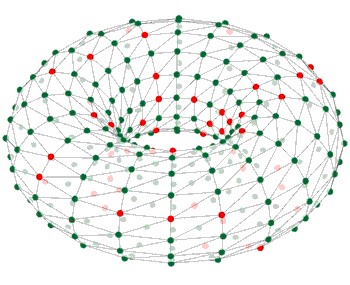
Professor Susan Kimber is an advocate for the use of human stem cells in research as a way to reduce our reliance on animals. Her work focuses on using stem cells to understand human development and genetic disease and she believes that this work holds great promise for the future of therapeutics and could help us to understand what goes wrong in certain genetic conditions.

She says: “We care primarily about human medicine so it makes sense that, where possible, we should be using human cells. Genetically engineered animals have their place in understanding disease but they also have limitations. Ultimately, human cells better reflect human diseases.”
Pluripotent Stem cells are non-specialised cells which have no set designation but, given the right environment, have the potential to develop into a huge variety of specialised cell types, such as brain cells, muscle, heart or kidney tissue.
Professor Kimber uses pluripotent stem cells to research a range of conditions, including kidney disease. Annually 2.6 million people world-wide undergo dialysis or transplantation for end-stage kidney disease, of these, 2.2 million are likely to die prematurely while awaiting treatment.
“These figures are shocking” She says “There is still so much we don’t know about kidney disease and we hope to fill in some of these gaps.”
Our methods reduce the reliance on animals for this type of research and we hope in the future that they might ultimately replace animals entirely.
Professor Susan Kimber
A range of methods
Professor Kimber’s team uses a range of methods to study kidney development in both healthy and diseased tissue.
One technique, which has seen huge advances recently, allows Professor Kimber’s team to grow partly functional mini-kidneys in the lab. The technique uses pluripotent stem cells created by genetically reprogramming adult cells and reverting them back to a stem cell-like state. These stem cells are then grown under very specific conditions to create small (3-6 mm in diameter) roughly disk shaped mini-kidneys.
These three dimensional ‘mini-organs’, contain many of the cell types and structures you would expect to find in a normal developing kidney, including filtration units and blood vessels. Not only do they resemble scaled down segments of a developing kidney but they also have been shown to replicate some kidney functions. However, they cannot replicate all the functions of a developed organ, since they lack a method of waste removal and a functional blood supply. Despite these limitations, mini-kidneys are valuable in aiding our understanding of kidney development, especially in inherited diseases and in understanding drug toxicity.
Professor Kimber says: “Drug toxicity tests in animals can be inadequate and with limited alternatives, they are often our only option.” She continues: “Some research groups are now making progress in purposing these mini-organs to screen large quantities of drugs and to identify useful compounds. Therefore replacing the use of animals at this early-stage of the drug development process.”
Professor Kimber’s lab is now working to take the concept of the mini-kidney to a whole new level. To better understand the potential stem cells have to develop into functional mini-organs, Professor Kimber alongside Professor Adrian Woolf, have successfully grown functional human kidney tissue within a living organism.
By injecting human stem cells, programmed to develop into kidney tissue under the skin of a mouse, the team have developed what they refer to as organ-like tissue masses. These tissue masses perform some of the functions of a normal kidney, connecting via a network of capillaries to the mouse’s own blood supply and showing some evidence of the ability to filter substances from the blood.
A huge step forward
“This is a huge step forward” says Professor Kimber “It is the first time it’s been shown that these mini-kidneys can develop to a stage where they begin to filter blood and generate waste as a normal kidney would.
“With so many patients failing to receive kidney transplants in time, we hope that one day these mini-kidneys could be transplanted into patients, keeping them healthy for longer while they wait for an organ transplant” she says.
“But first we need to show that mini-kidneys are able to replicate fully the functions of a normal kidney.
“We are still a long way off developing transplantable tissue, since these small organ-like masses do not develop a means of removing waste product or filtering from a high pressure blood supply - both of which are necessary for functional kidney tissue. But, we’re on the right track.”
“Treating human disease is our priority and we think that human stem cells provide us with the most representative system by which to do this,” she continues. “Although work with animals is still necessary at the moment to develop and test new protocols, our methods reduce the reliance on animals for this type of research and we hope in the future that they might ultimately replace animals entirely.”
